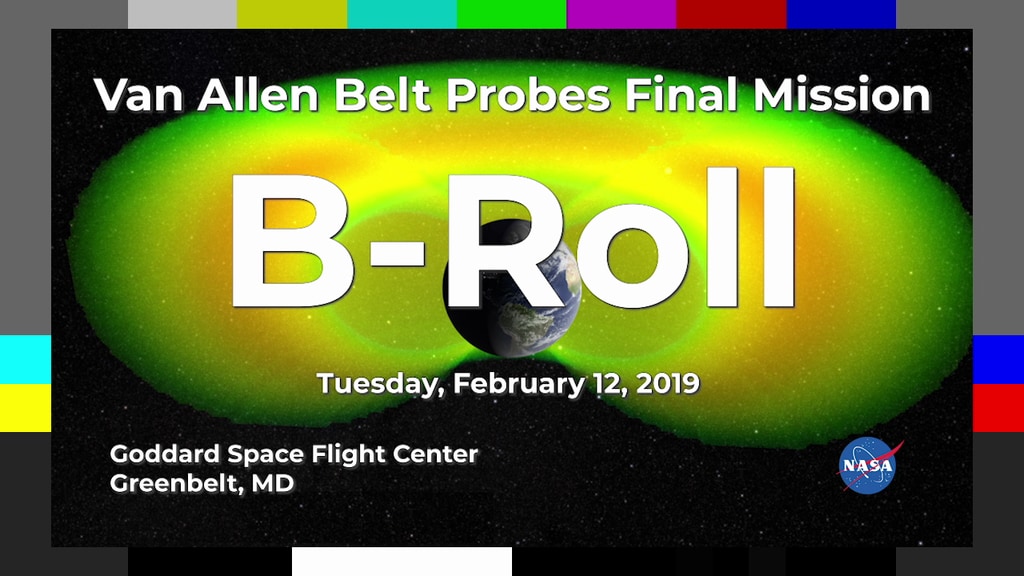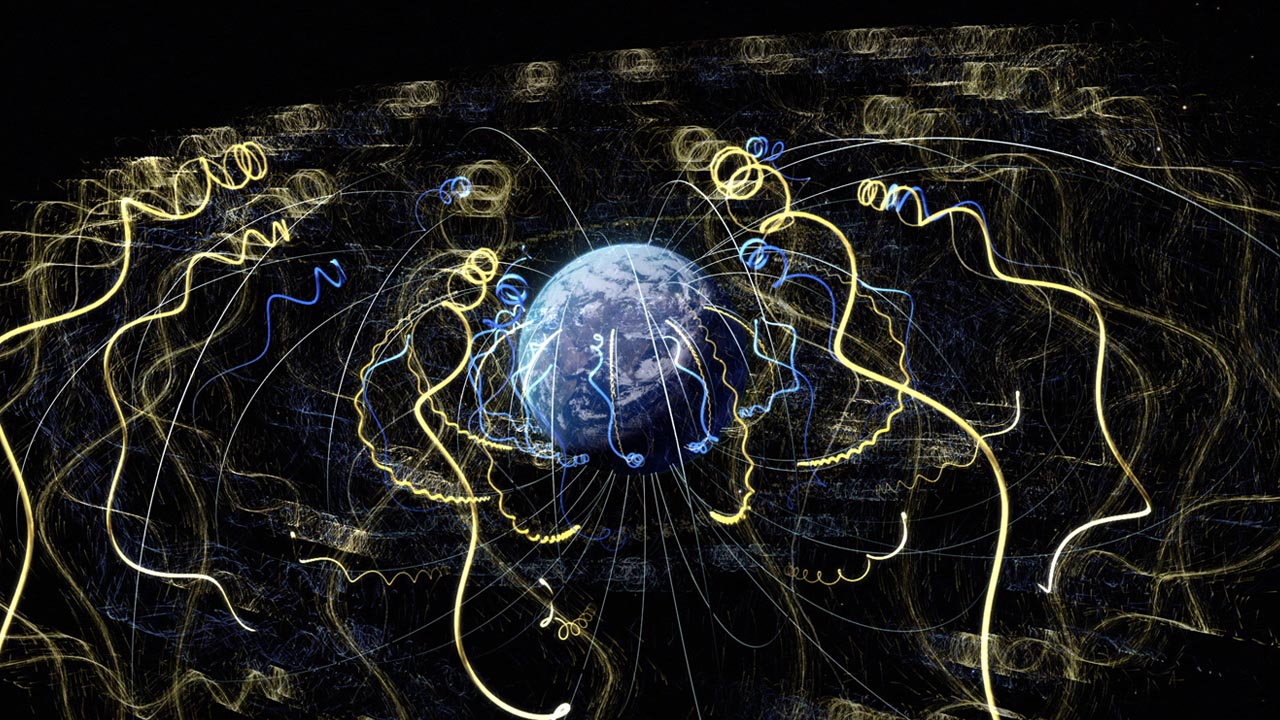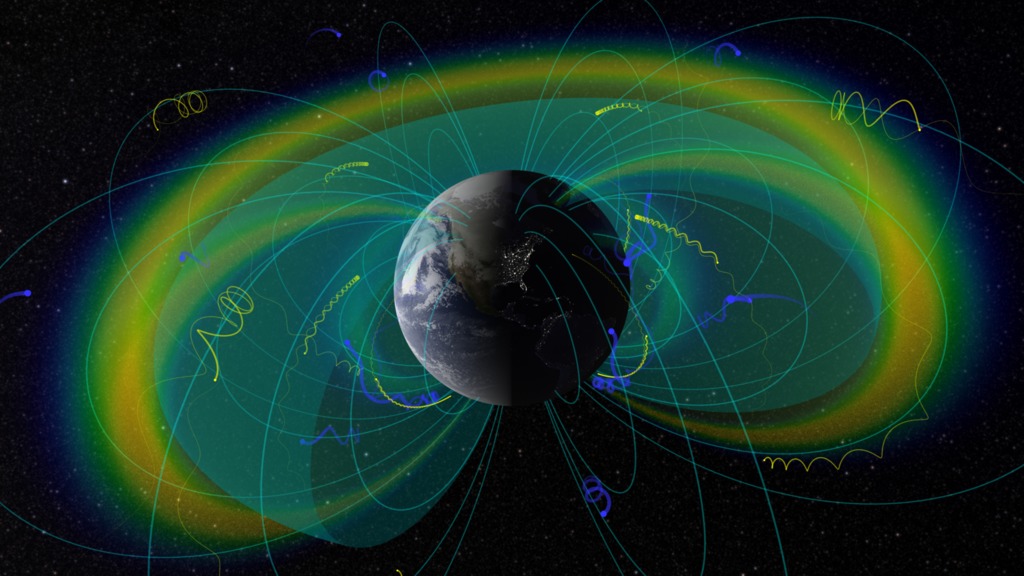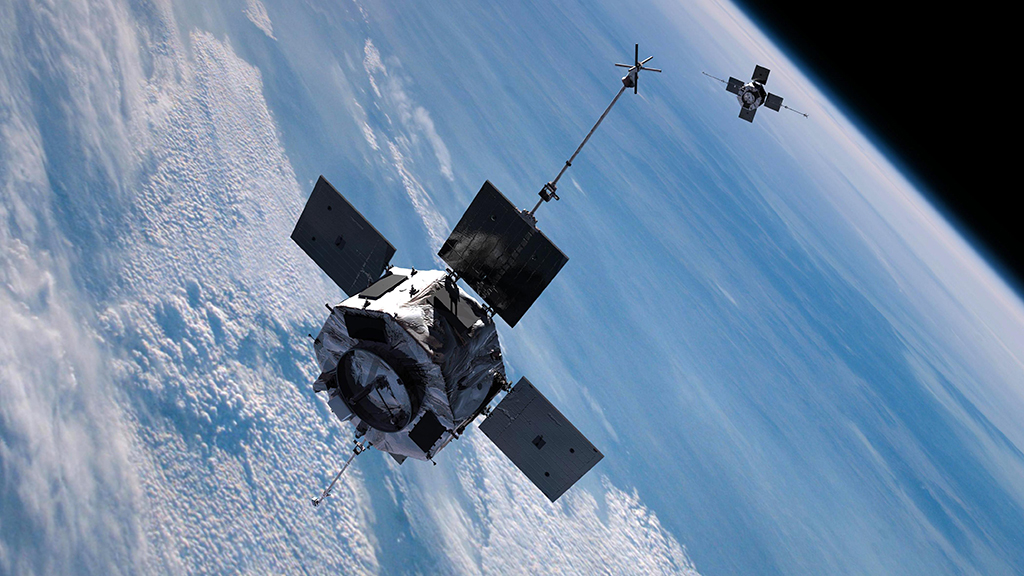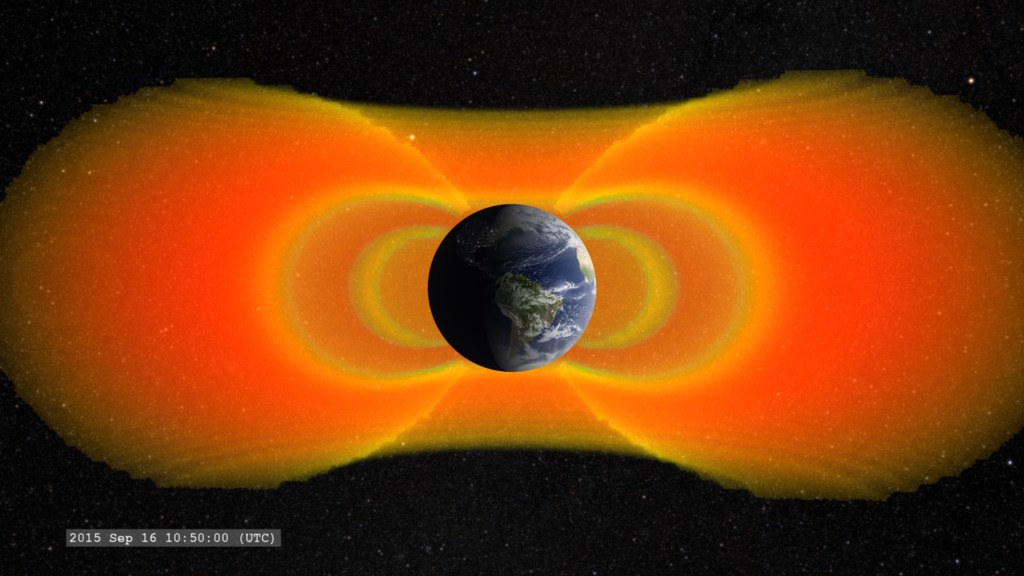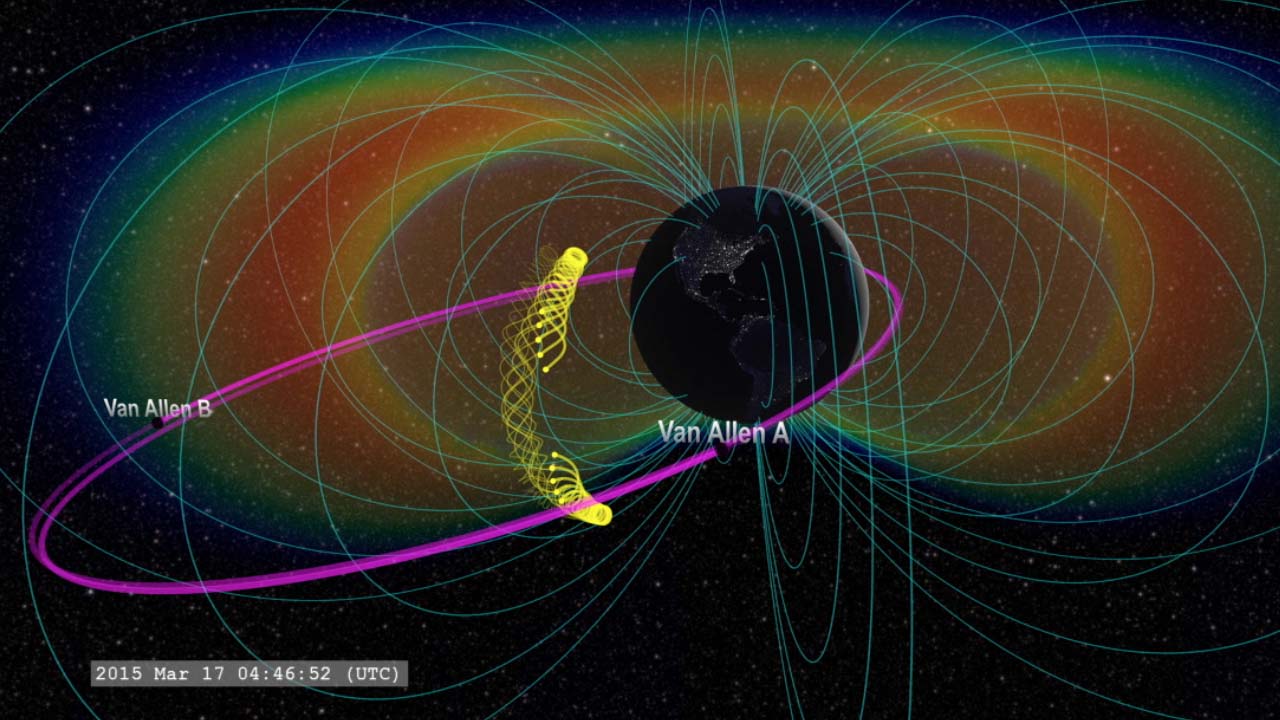The Electron Beltway

NASA's Van Allen Probes reveal how electrons move through the radiation belts that surround Earth.
Two doughnut-shaped regions of charged particles encircle our planet. These regions, called the Van Allen radiation belts, were discovered more than 50 years ago, but their behavior is still not completely understood. The belts are made of protons and electrons from the solar wind and cosmic rays that are captured by Earth's magnetic field. Some of these particles move very fast, but observations from NASA’s two Van Allen Probes show that the fastest, most energetic electrons in the inner radiation belt aren’t present as much of the time as scientists thought. That means there typically isn’t as much radiation in the inner belt as previously assumed — good news for spacecraft at risk of radiation damage when flying through that region of near-Earth space. The Van Allen Probes, specifically designed to be immune to this type of radiation, plunge through the radiation belts up to six times a day to study the physical processes that add and remove electrons from the region. The Van Allen belts are a crucial part of a larger space weather system that stretches from the Sun to Earth and beyond. Watch the videos to learn more.
This visualization shows an influx of electrons (red) after a solar storm and their escape from Earth’s radiation belts.
The Van Allen Probes detected a pulse of high-energy electrons in Earth’s radiation belts after a coronal mass ejection.

Some of the first data from the Van Allen Probes revealed that a third radiation belt occasionally encircles Earth, as well.

The Van Allen Probes continue to reveal the complex structures and behaviors of Earth’s radiation belts.
For More Information
See NASA.gov
Credits
Please give credit for this item to:
NASA's Scientific Visualization Studio
-
Animator
- Tom Bridgman (Global Science and Technology, Inc.)
-
Producer
- Genna Duberstein (USRA)
-
Scientists
- Seth Claudepierre (The Aerospace Corporation)
- Shrikanth G. Kanekal (NASA/GSFC)
- Dan Baker (University of Colorado)
-
Writers
- Mara Johnson-Groh (Wyle Information Systems)
- Micheala Sosby (NASA/GSFC)
Release date
This page was originally published on Monday, April 30, 2018.
This page was last updated on Wednesday, May 3, 2023 at 1:46 PM EDT.
